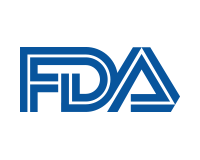United States Department of Health and Human Services

United States Food and Drug Administration: Publications
Date of this Version
4-1965
Document Type
Article
Citation
Reprinted from ANALYTICAL CHEMISTRY ANNUAL REVIEWS, Vol. 37, Page 130R, April 1965.
Abstract
METHODOLOGY for residue analysis has advanced rapidly during the current review period, from November 1962 through October 1964. Notable progress has been made in the development and refinement of methods of analysis by which any or all of a large number of pesticide residue chemicals can be detected and measured in one general operation. This is of particular significance because great interest has developed-outside the scientific community as well as within - in the possible presence of pesticide chemicals in all parts of our environment, including man himself. Only by the use of improved methodology will it be possible to accomplish the task of detecting, identifying, and measuring the many possible residual pesticide chemicals. It is only after the presence or absence of these chemicals in any part of our environment has been proved unequivocally that the medical man, the lawyer, the lawmaker, the administrators in government and in industry, and other interested groups can assess the significance of such residues.
There are 300 to 400 chemicals registered for use on food products alone, and a few hundred more are registered for other uses whereby they may become part of our environment. The chemist cannot know which of the hundreds of possible pesticide chemical residues to look for in samples of air, water, soil, plants, human and animal tissues, prepared foods, etc. There is an urgent need for general procedures that can identify and measure a large number of chemicals at one time. They must be highly sensitive and accurate, since it is essential that all monitoring of our environment be at a level considerably below any "tolerance" or otherwise critical level, so that trends can be more readily recognized and assessed for significance. Upward or downward trends in any portion of our environment will be recognizable only when the methodology becomes sufficiently sensitive and accurate so that analyses in the fraction-of-a-part-per-million or even part-per-billion range become routinely dependable (Fischbach, H. Pub. 1082, National Research Council, p. 55, Nov. 29,1962).
Included in
Dietetics and Clinical Nutrition Commons, Health and Medical Administration Commons, Health Services Administration Commons, Pharmaceutical Preparations Commons, Pharmacy Administration, Policy and Regulation Commons


Comments
U.S. government work.